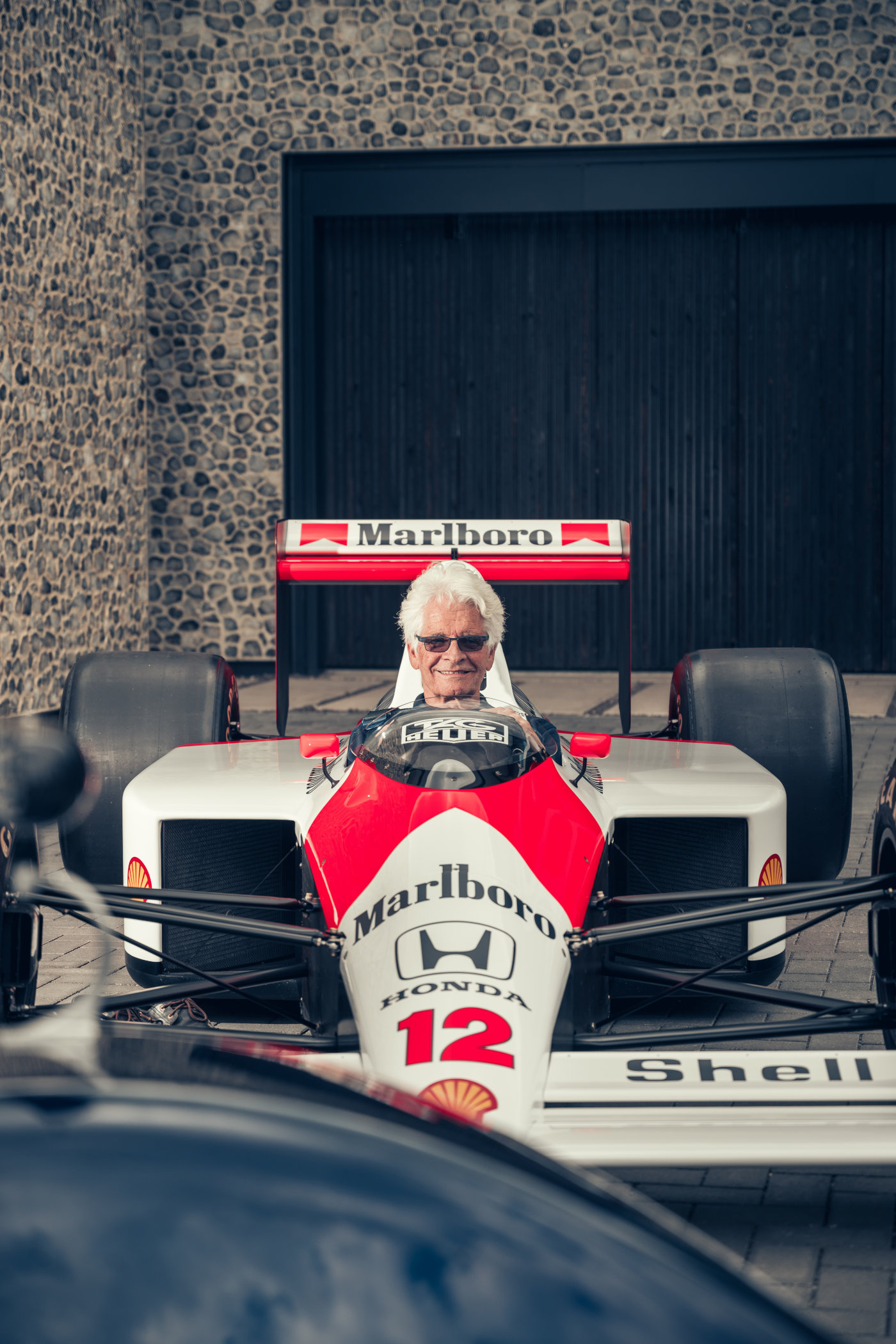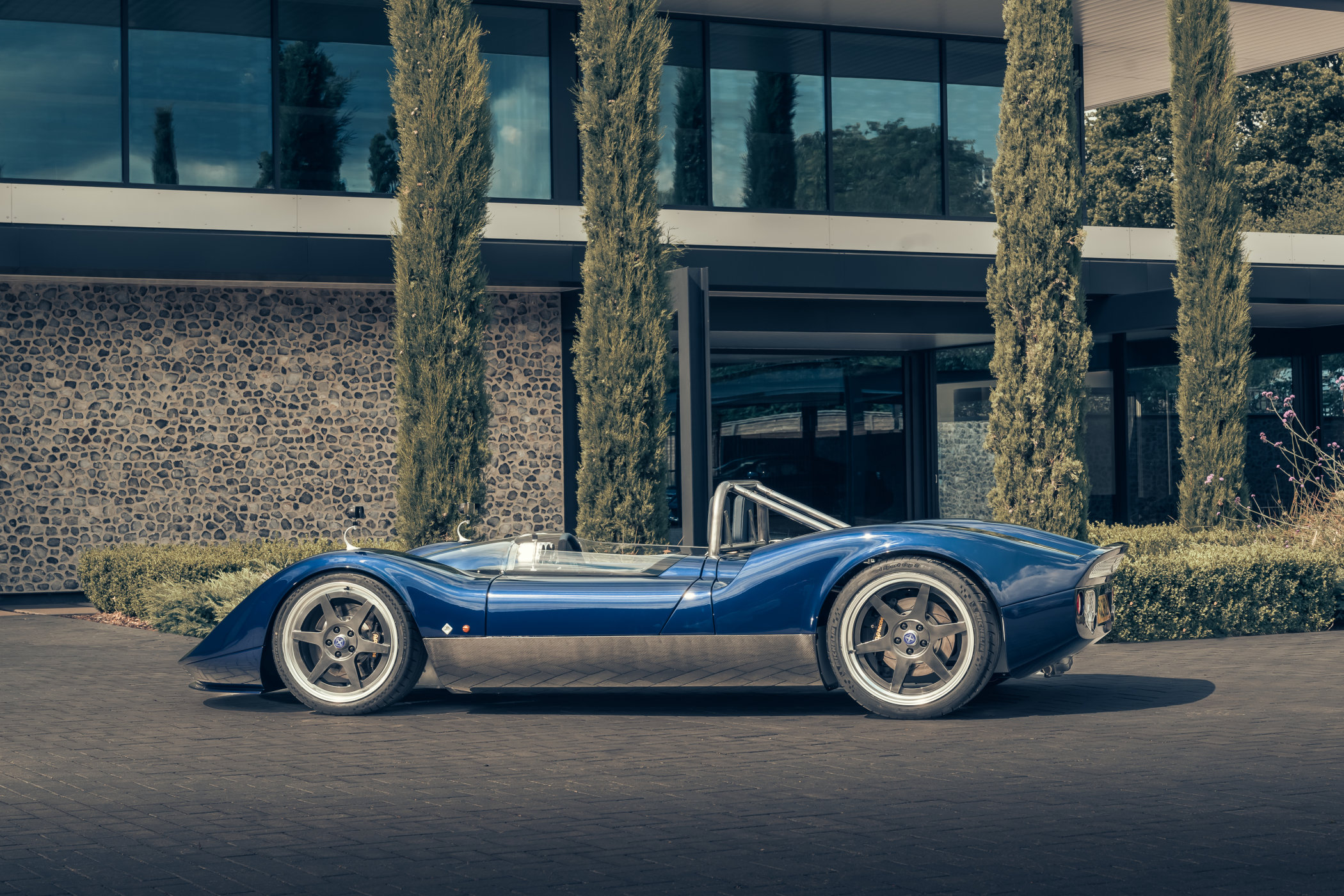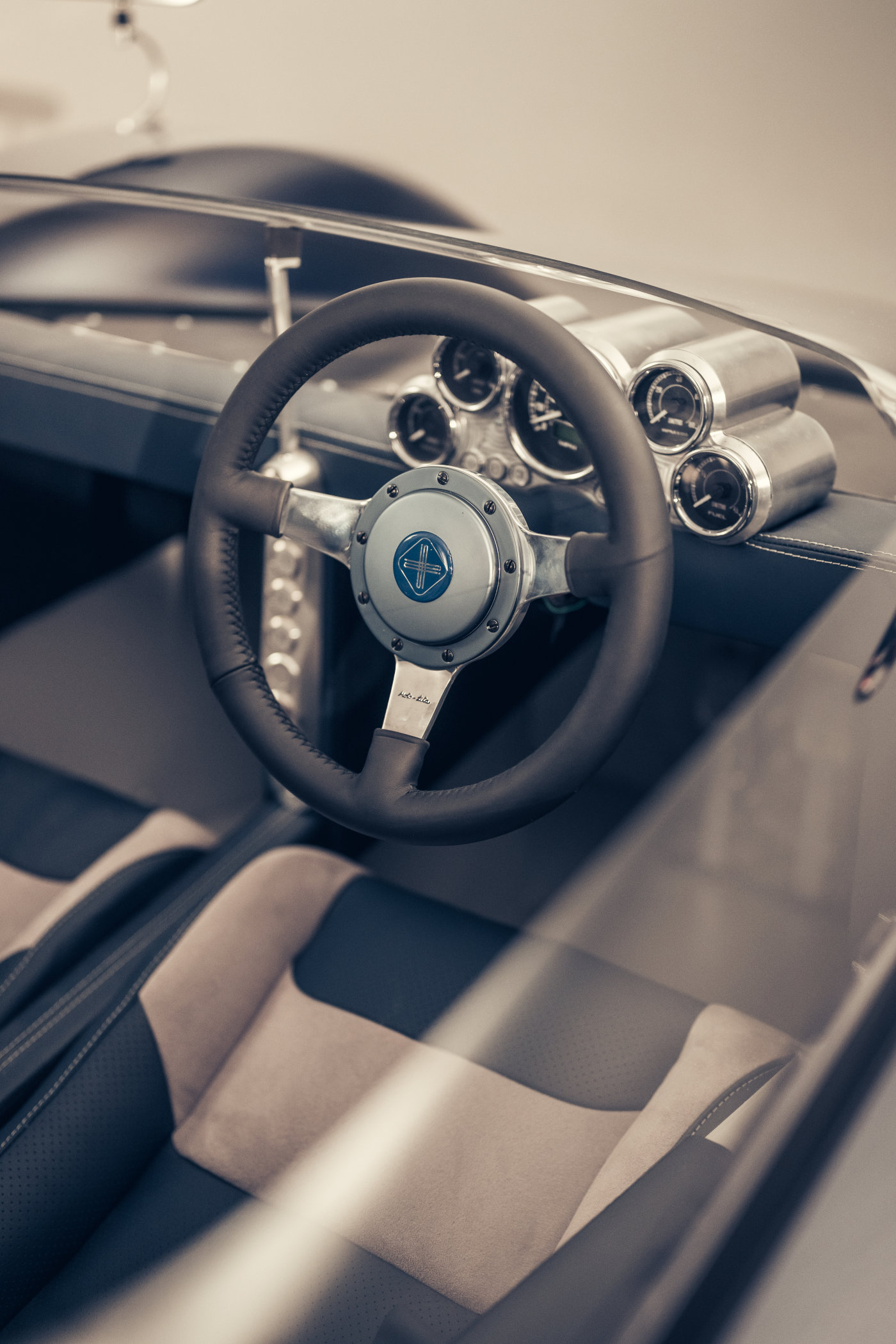The Nichols N1A is a F1 Designer’s Wildest Dream Come True
Legendary F1 designer Steve Nichols creates his vision of a road-legal McLaren protoype racing car.

It’s not often we have the potential chance of owning a genuine thoroughbred Can-Am-inspired road car built by a former Formula 1 engineer, but today’s the day. Steve Nichols, who famously was involved in the development of the all-conquering McLaren MP4/4, has stepped out of the limelight and presented his own supercar just a couple of weeks ago, the Nichols N1A. And by the looks of it, it’s an uncompromising mix of both new and old. But there’s more to the story than just another low-volume high-dollar performance car, as the Nichols N1A is all about passion and excitement. It promises a visceral driving experience inspired by the iconic McLaren M1A sports prototype racing car.
Winning all but one
As mentioned in the intro, Steve Nichols is a big name in Formula 1. While he has been out of Formula 1 for quite a while now, he is remembered as the man responsible for the most successful F1 car of all time: the legendary McLaren MP4/4. Nichols worked with McLaren through most of the 1980s and 1990s, an era where the team was perhaps at its best. It was the age of men like Niki Lauda, Alain Prost, and of course, Ayrton Senna. Names that will forever be remembered as some of the greatest to have graced a F1 track.
Steve Nichols became lead designer for McLaren in 1987 with the MP4/3 being his first development. That year, the TAG-Porsche engined car would claim three victories at the hands of ‘Le Professeur’, Alain Prost. The team ended up second in the Constructor’s Championship behind the Williams team, with Prost and fellow McLaren driver Stefan Johansson coming in 3rd and 6th in the Driver’s Championship, respectively.
A year later, though, McLaren would obliterate the competition throughout the entire 1988 season with the newly built MP4/4, where Nichols would work together with another legendary F1 engineer, Gordon Murray. The Marlboro-McLaren team switched to Honda instead and managed to bring in the blisteringly quick but rebellious Ayrton Senna to drive alongside Alain Prost, then a two-time World Champion with McLaren already. The mix of Honda, Senna and Prost would prove immensely successful but also rather challenging to manage. The team won all but one race that year, with the sole non-victory being the Italian Grand Prix at Monza. Prost was forced to retire due to an engine failure, while Senna crashed out of the lead when trying to lap a backmarker. Nevertheless, the Brazilian ace would be crowned World Driver’s Champion by the end of the season, with 8 wins over Prost’s 7, making 15 victories out of 16 races.
The McLaren MP4/4 would forever be known as one of the most iconic cars in Formula 1, both in terms of looks/livery as well as its sheer dominance. It still holds the record for the highest winning percentage (94%) by a single car/manufacturer in a season, although Max Verstappen and Red Bull are aiming to break the record this season.
Can-Am Inspiration
Steve Nichols used this engineering legacy to establish Nichols Cars in 2017, along with John Minett, now CEO of the company. The idea was, and still is, to produce the ultimate driving machine, providing an ‘immersive, intoxicating and highly emotional experience’. Together with a team of highly talented and skilled craftsmen and -women, Nichols Cars has set out to find inspiration in the golden era of racing, the 1960s. This was a time when engines were mostly naturally aspirated, cars were wildly challenging to control and drivers were total rock stars. Formula 1 is at the heart of this age of motorsport for most, but it is, in fact, the Group 7 Sports Prototype and subsequent Can-Am racing series where Steve Nichols and crew found their muse: the McLaren M1A racing car.

The 1963 M1A was derived from the M1, which was McLaren’s first purpose-built racing car. The M1A had a tubular space frame chassis and was fitted with a V8 engine from either Oldsmobile, Ford or Chevrolet. Power ranged from around 310bhp from a 4.5L Oldsmobile V8 to 550bhp courtesy of a 5.7L Chevrolet V8, and combined with a weight of around 550 kilos, it was a very capable racing car. It would quickly prove itself on track as a fast and agile machine upon which customer cars were ordered and built. The M1A would ultimately lead to the hugely powerful and virtually unbeatable McLaren M6 and M8 series of Can-Am racing prototypes. No wonder then that Nichols, with such a history at McLaren, chose it as his guiding light for his very own car.
In the clip above, the McLaren M1A (the white & purple car) can be seen battling it out with a Lola T70 (in white & red) at the 79th Goodwood Member’s Meeting last year, which gives you a hint of how capable the car was in its heydays, when in the right hands.
The Nichols N1A
Now, all this work and history culminates in the Nichols N1A, which could be considered a direct descendent of the M1A but built for public roads instead of a racing track. It not only looks very similar, but it is also built following the same philosophy as the original; low weight with high power. From front to back, the N1A looks equal parts vintage and modern, which is quite surprising but makes for one hell of a good-looking machine!
Starting with the exterior, the connection between the M1A from the 1960s and this N1A is very obvious. The low profile of the car follows the same general shape and is produced from Formula 1-grade graphene-infused carbon fibre. This not only keeps the weight down but also adds rigidity. The front section of the body starts very low and swoops over the front wheels.
Typical to cars of the era, the windshield starts very early and is kept very low, not even clearing the headrests and roll hoop. The body continues along the side with very minimalistic doors leading to the rear section. This kicks up over the rear wheels whilst also incorporating air intakes to allow the engine to breathe and the rear brakes to be cooled. It ends with an abrupt cut and upswept duck-tail-like tail fin, which is again very reminiscent of the M1A it takes after.
The design of the body has been perfected in a wind tunnel, something the original McLaren team didn’t have back in the day. This high-tech exterior is draped over a next-gen carbon fibre and aluminium chassis that’s slightly longer and wider than the M1A. Nichols installs hand-fabricated independent suspension all around, racing-derived brakes and modern wheels wrapped in Michelin Pilot Sport Cup 2 tyres. These 19 and 20-inch wheels are perhaps the biggest ‘break’ in the overall M1A-inspired vibe, adding to the modern look and feel.
Nestled directly behind the minimalistic interior is the N1A’s heart. Three levels of performance are available, all using a V8 by General Motors. The first and least powerful uses a Chevrolet LT1 V8 that produces 460 horsepower. That’s already quite a lot in a car that weighs 900 kilos, but if you want a bit more, this can be beefed up to 520 horsepower. If you’re really looking for a hair-raising experience behind the wheel of the N1A, there’s option number three: a 7-litre V8 producing a staggering 650 horsepower! That gives the N1A power-to-weight ratio of 700bhp per tonne. To paint the picture, a Bugatti Veyron hits ‘only’ 523bhp per tonne out of a 1,001bhp 16.4-litre quad-turbo W16 powertrain.
The first 15 cars will all be fitted with the top-spec V8 and are individually numbered in remembrance of the McLaren MP4/4’s 15 out of 16 wins during the 1988 Formula 1 season. No more than 100 will be built in total, with production expected to start before the end of the year. As always, a comprehensive personalisation programme is available to give the N1A your personal touch. Surprisingly perhaps, the Nichols N1A starts at around GBP 375,000 instead of being another million-dollar plaything for the super-rich only. Agreed, for a car like this, you’d still need very deep pockets, but not as deep as I initially expected!
For more information, please visit Nichols-cars.com.



















1 response
At least it’s not a million dollars, then it would be for the super-rich. Run-of-the-mill rich will do here.